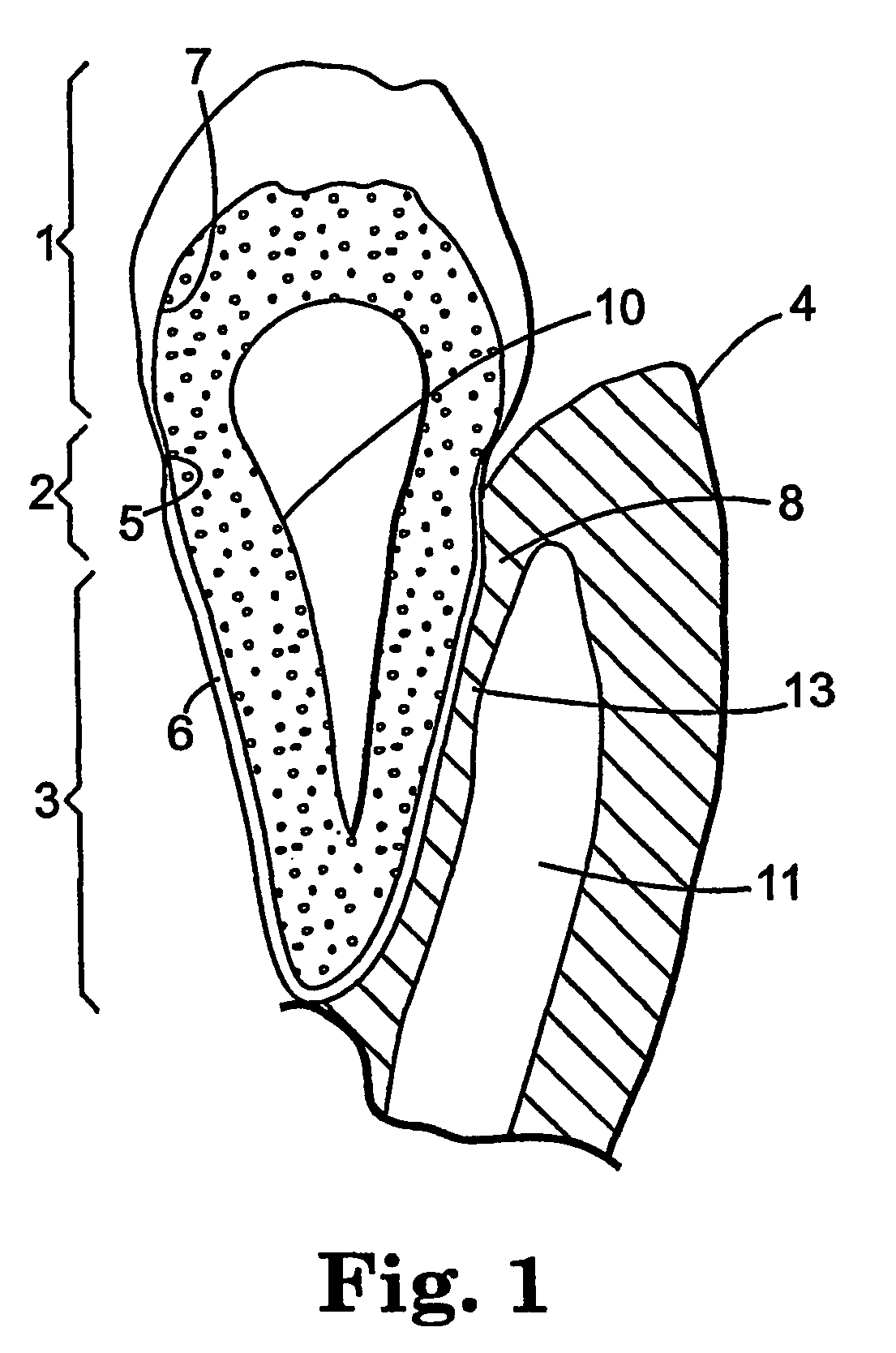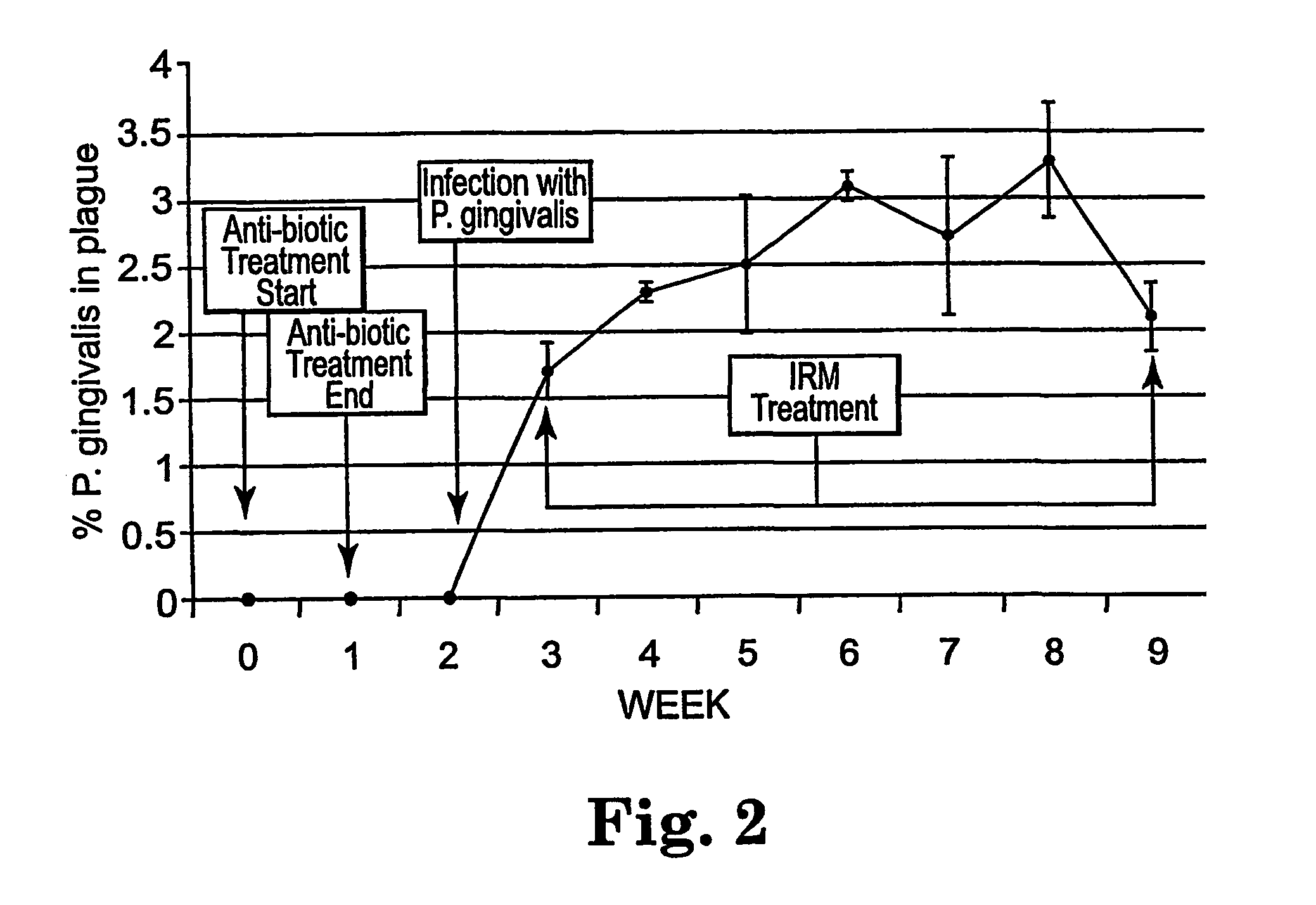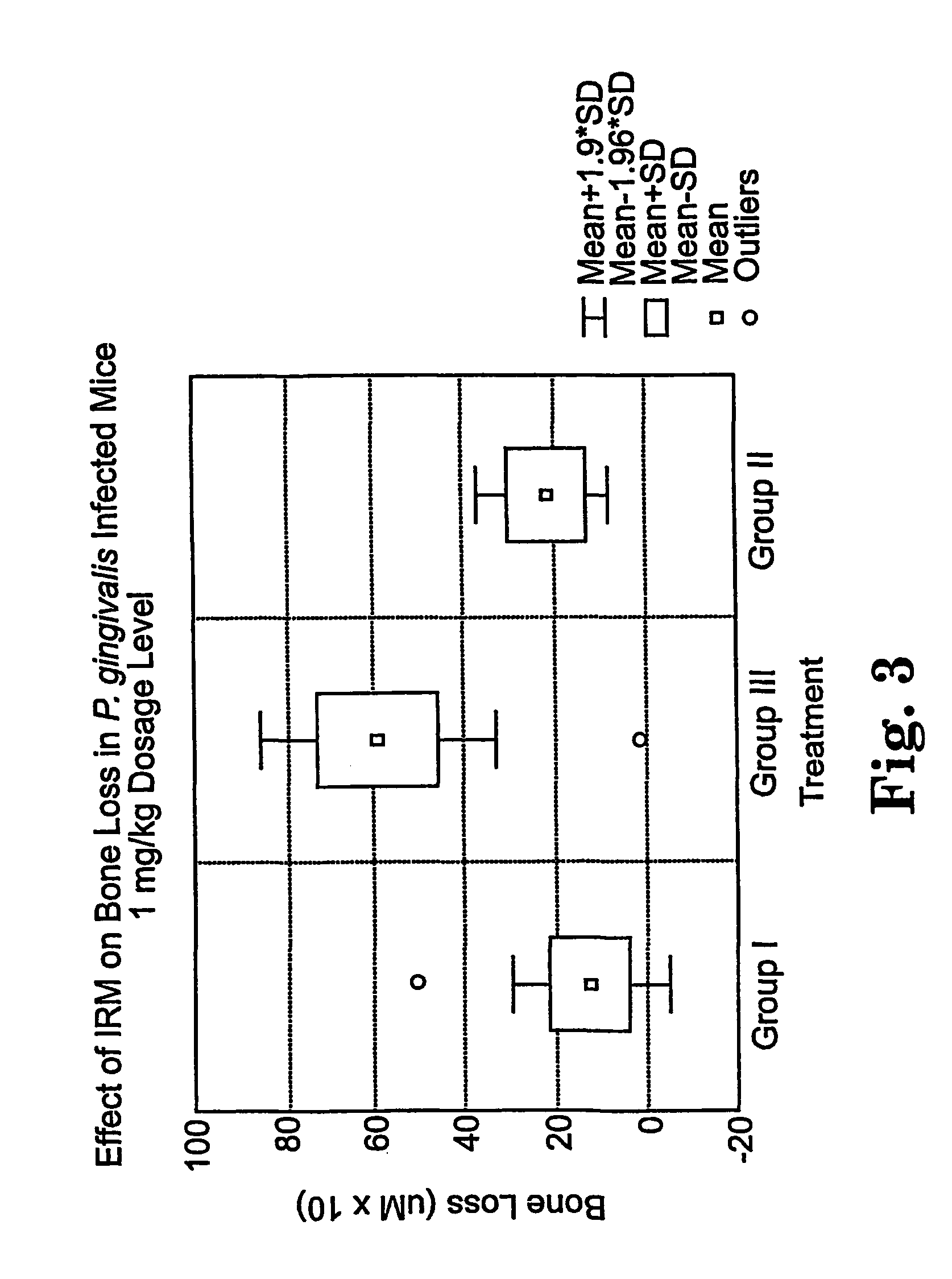Methods for the treatment of periodontal disease
a periodontal disease and treatment method technology, applied in the field of periodontal disease treatment or prevention, can solve the problems of patients being subject to re-infection, insufficient bacteria alone to cause the disease,
- Summary
- Abstract
- Description
- Claims
- Application Information
AI Technical Summary
Benefits of technology
Problems solved by technology
Method used
Image
Examples
example 1
Treatment of Mice with an IRM
[0482]Studies in mice infected with bacteria known to cause periodontitis were performed to determine the potential utility of the IRM compounds in this disease.
Preparation and Maintenance of Bacterial Cultures
[0483]An isolate of Porphyromonas gingivalis from the subgingival pocket of a patient with adult periodontitis and non-insulin dependent diabetes was used. The isolate is deposited with American Type Culture Collection, 10801 University Blvd., Manassas, Va. 20110-2209 USA as ATCC Accession No. 53977 (strain A7A1-28). The organisms were propagated in an anaerobic jar (Becton Dickinson Microbiology Systems, Cockeysville, Md.) under an atmosphere of 5% CO2 10% H2 and 85% N2 at 37° C. on PRAS (prereduced anaerobically sterilized) Brucella agar plates (Anaerobe Systems, Morgan Hill, Calif.). Broth cultures were grown in BHTS media, a 50% mixture of Tripticase Soy and Brain Heart Infusion broth supplemented with 5% Yeast Extract (all from Becton Dickinso...
example 2
Treatment of Naturally Occurring Periodontal Disease in a Dog with an IRM Gel Compostion
[0494]One dog with naturally occurring periodontal disease was identified by clinical signs including Gingival Index (scored 0–3 by observation), Bleeding Index (scored 0–3 by observation, and Probing Depth (measured to the nearest mm using a North Carolina Probe). The animal was treed with a gel composition containing resiquimod, prepared as described below, in addition to the standard treatment of scaling and root planing. Therapeutic efficacy was determined by a trained examiner measuring the aforementioned indicies around the affected teeth.
Preparation of IRM Gel Composition Containing the IRM Resiquimod
[0495]Propylene glycol (700 g) and the IRM resiquimod (4-amino-2-ethoxymethyl-α,α-dimethyl-1H-imidazo[4,5-c]quinoline-1-ethanol, 7.0 g) were added to a 1000 mL glass beaker. The resulting mixture was heated (about 56° C.) with stirring until all of the resiquimod was dissolved. The resulting s...
example 3
Treatment of Chronic Adult Periodontal Disease in a Human Patient with an IRM Containing Transmucosal Patch
[0504]A human patient affected with chronic adult periodontal disease can be identified by clinical signs typically including BI, GI, Probing Depth. The human can be treated with a transmucosal patch containing an IRM, prepared as described in Example 4 below, in addition to the standard treatment of scaling and root planing.
[0505]The patient's teeth can be cleaned of supragingival plaque. The teeth affected by periodontitis can be scaled and root planed to remove plaque and calculus from both supragingival and subgingival tooth surfaces using known instruments, such as, for example, an ultrasonic Cavitron and curets. The Cavitron is used to remove gross debris and the curets are used to smooth the root surface.
[0506]Depending on the size of the periodontitis lesion, a transmucosal patch containing about 0.05–1.0% of IRM per patch, prepared, for example, as described in Example...
PUM
| Property | Measurement | Unit |
|---|---|---|
| time | aaaaa | aaaaa |
| time | aaaaa | aaaaa |
| time | aaaaa | aaaaa |
Abstract
Description
Claims
Application Information
 Login to View More
Login to View More - R&D
- Intellectual Property
- Life Sciences
- Materials
- Tech Scout
- Unparalleled Data Quality
- Higher Quality Content
- 60% Fewer Hallucinations
Browse by: Latest US Patents, China's latest patents, Technical Efficacy Thesaurus, Application Domain, Technology Topic, Popular Technical Reports.
© 2025 PatSnap. All rights reserved.Legal|Privacy policy|Modern Slavery Act Transparency Statement|Sitemap|About US| Contact US: help@patsnap.com



